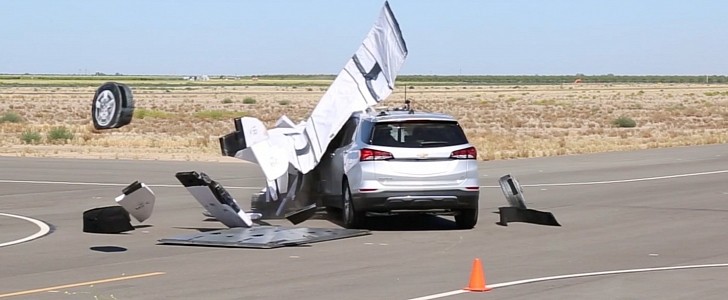AAA released Thursday a study showing that Automatic Emergency Braking systems from four different automakers are garbage. The results mirror previous tests performed by the IIHS, showing that current vehicles are still a long way from offering safety systems designed to prevent crashes effectively.
Tesla is under fire for its Autopilot and FSD Beta software because people abuse the system. For all it’s worth, Tesla Autopilot is nothing but a safety assistance system just like others in millions of cars on the road. Safety agencies around the world found out that it is better than others, a claim that is now challenged after a white-hat hacker found code that identifies safety testing procedures.
As for the similar software used by other carmakers, it is far from perfect, according to recent test results. AAA crash-tested four models with Autonomous Emergency Braking systems, finding out that all of them were crap, failing almost every single time. Those models were the 2022 Chevrolet Equinox LT, 2022 Ford Explorer XLT, 2022 Honda CR-V, and 2022 Toyota RAV4 LE.
According to AAA, tests performed at 30 mph (48 kph) ended up somehow better, with the system preventing a rear-end collision 85 percent of the time. But when the speed was increased to 40 mph (64 kph), the percentage dropped to 30 percent. It should also be noted that official IIHS tests are conducted at 25 mph (40 kph), which explains why AEB systems perform better at 30 mph. On the other hand, only 3 percent of police-reported rear-end crashes happen at speeds below 25 mph, according to IIHS.
Believe it or not, rear-end crashes were the bright spot in this analysis. When it comes to intersection-based crashes, such as those resulting from left turns, the vehicles tested performed even worse. More specifically, none of the systems prevented a single crash. They did not even alert the driver or slow the vehicle’s speed. This is a far cry from what Autopilot can achieve even on a worse day.
A previous IIHS study showed that AEB systems have problems in low-light situations. This is especially true for pedestrian detection, where most safety assistance systems still struggle to offer meaningful results.
As for the similar software used by other carmakers, it is far from perfect, according to recent test results. AAA crash-tested four models with Autonomous Emergency Braking systems, finding out that all of them were crap, failing almost every single time. Those models were the 2022 Chevrolet Equinox LT, 2022 Ford Explorer XLT, 2022 Honda CR-V, and 2022 Toyota RAV4 LE.
According to AAA, tests performed at 30 mph (48 kph) ended up somehow better, with the system preventing a rear-end collision 85 percent of the time. But when the speed was increased to 40 mph (64 kph), the percentage dropped to 30 percent. It should also be noted that official IIHS tests are conducted at 25 mph (40 kph), which explains why AEB systems perform better at 30 mph. On the other hand, only 3 percent of police-reported rear-end crashes happen at speeds below 25 mph, according to IIHS.
Believe it or not, rear-end crashes were the bright spot in this analysis. When it comes to intersection-based crashes, such as those resulting from left turns, the vehicles tested performed even worse. More specifically, none of the systems prevented a single crash. They did not even alert the driver or slow the vehicle’s speed. This is a far cry from what Autopilot can achieve even on a worse day.
A previous IIHS study showed that AEB systems have problems in low-light situations. This is especially true for pedestrian detection, where most safety assistance systems still struggle to offer meaningful results.








